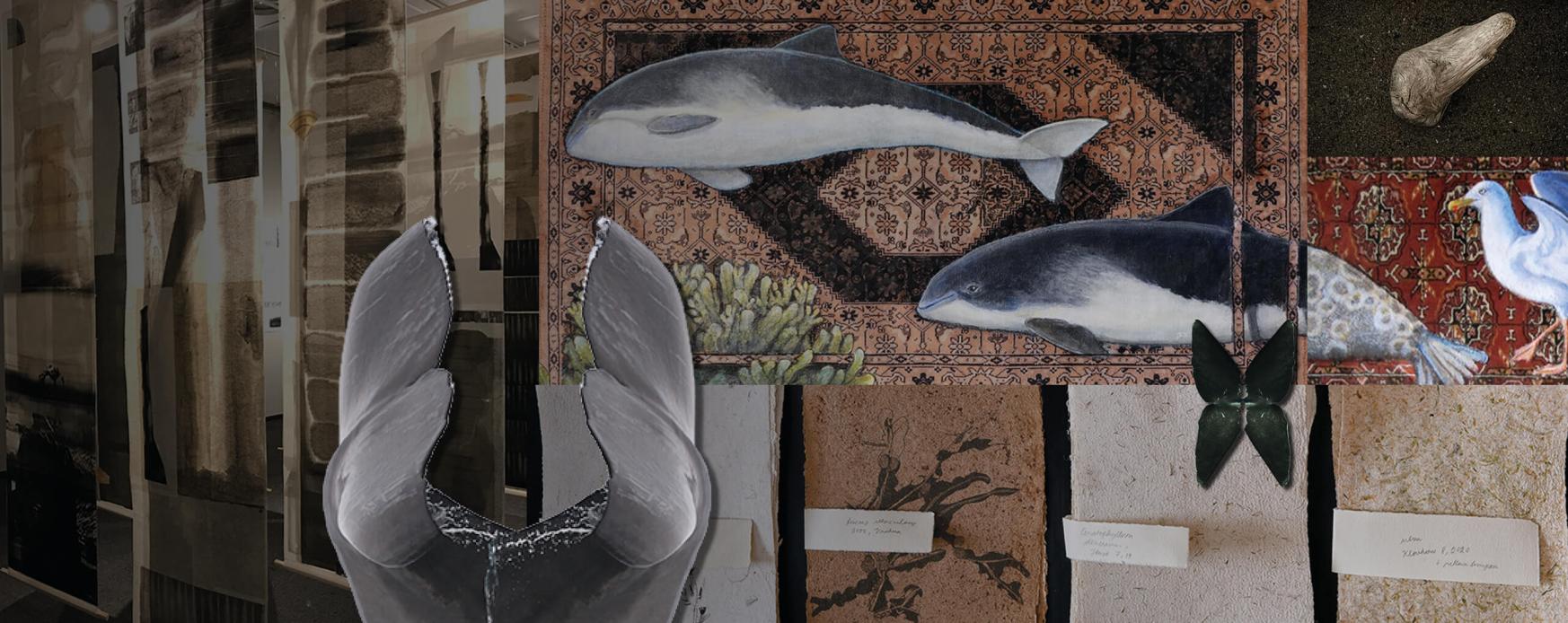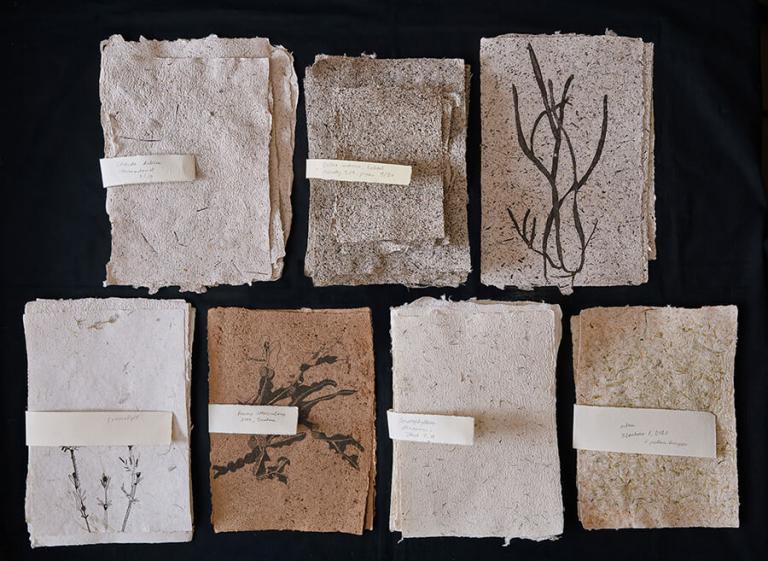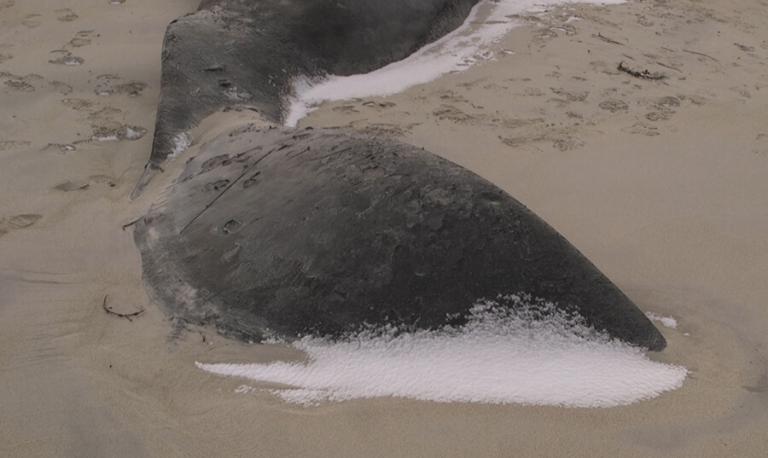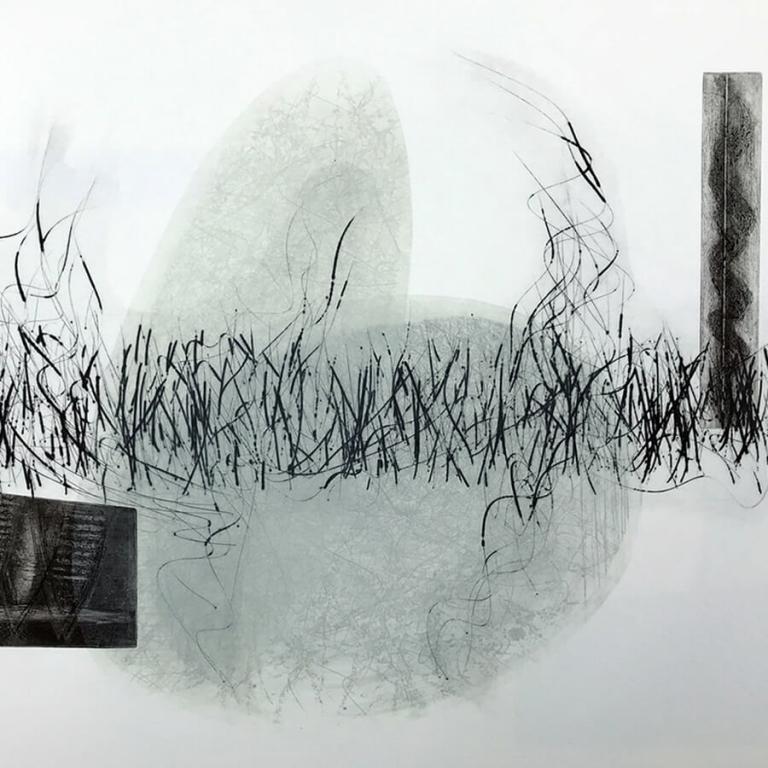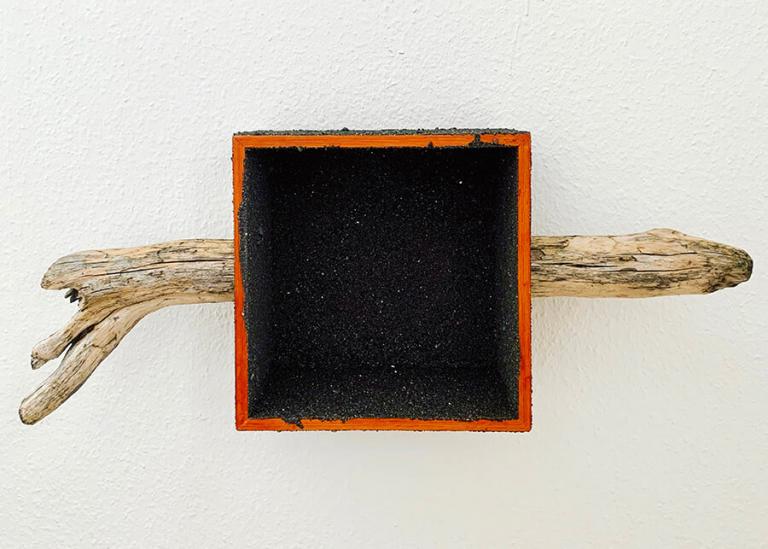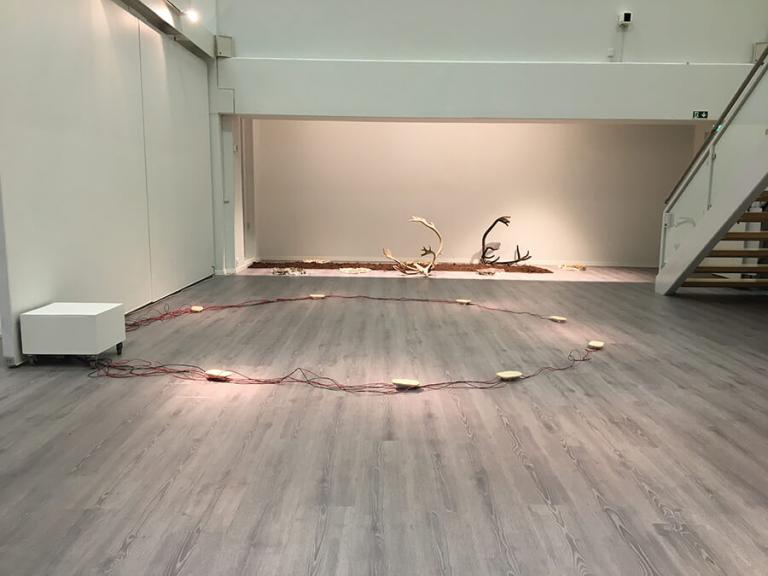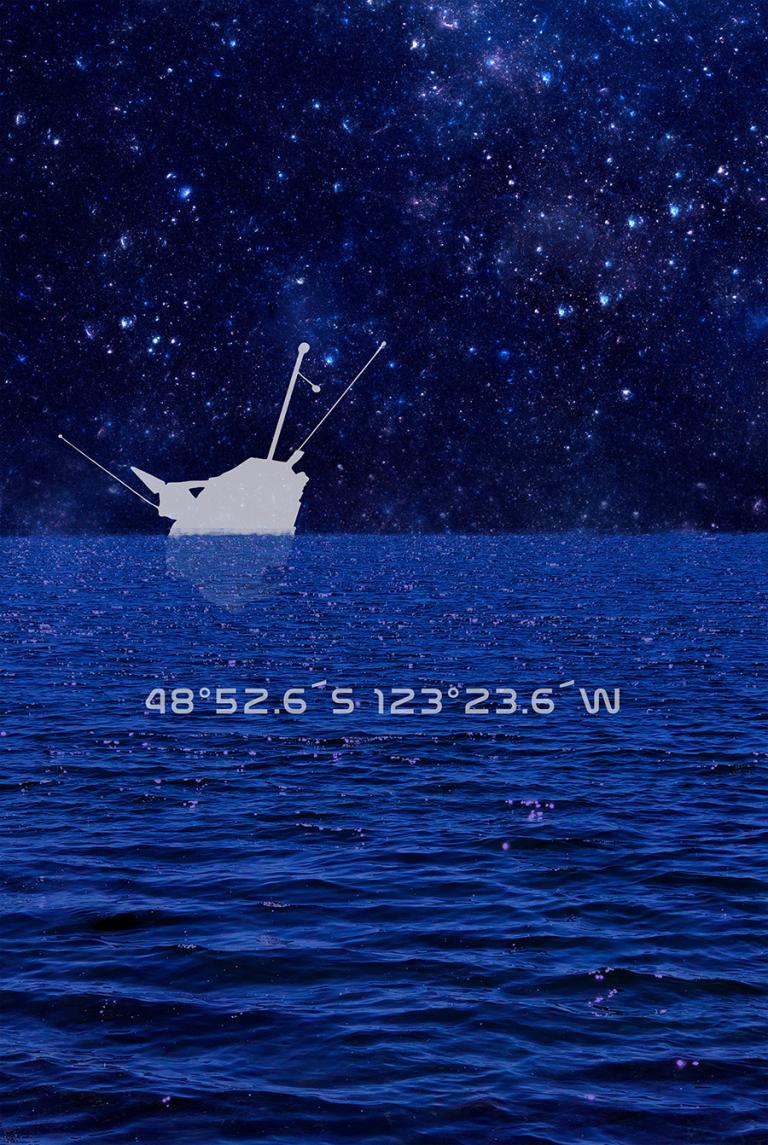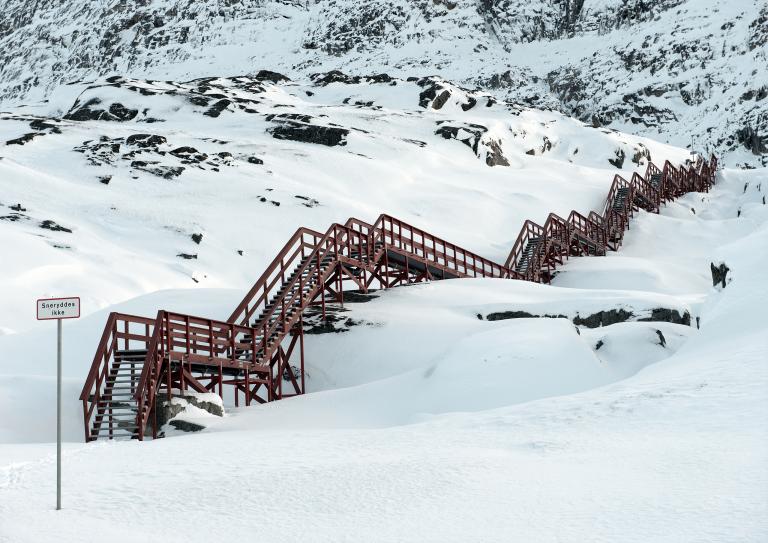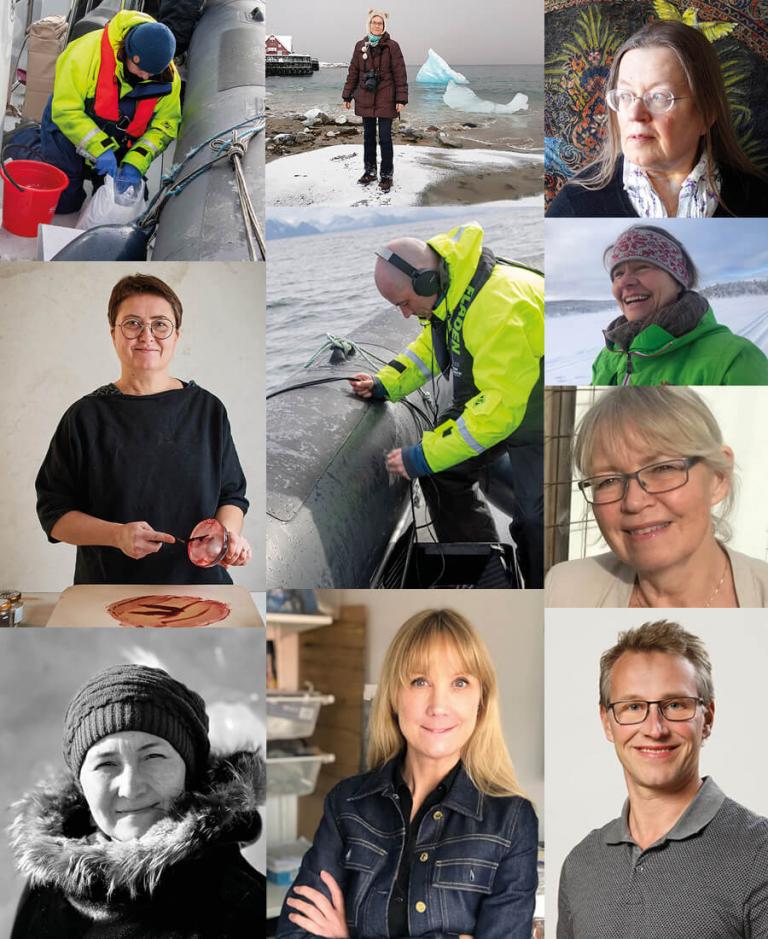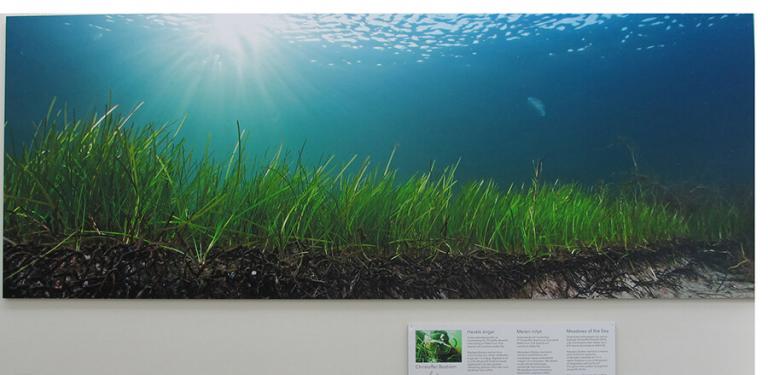What is happening around us and why?
Changes is an exhibition by 11 different artists and scientists from different Nordic regions, who has been coolabarating in order to grasp the changes that we experience around us. The works are sound and visual art in a variety of media, including videos, photographs, installations, sound works and mixed media works. You will experience the sounds and migration patterns of sperm whales, the urbanization and growth of the capital of Greenland, Nuuk, the endangered population of the only porpoise species in the Baltic Sea aswell as and the submarine realm of Åland.
COVID-19 has changed the everyday life of most of us. The pandemic may have a long lasting input and change the behavior of people and economic views. At the same time there are several global changes going on, such as migrations from small communities to big cities or from difficult circumstances, in search for a better life. There is a slow migration of fauna and flora towards the cold areas and global decrease of biological diversity. Everyone has certainly heard about climate change and global warming. All these changes affect also the Nordic region. The impacts of changes are, however, different in different places. Changes can be regarded as positive, neutral or negative.
What kind of changes have people in Åland noticed on their islands, in the sea surrounding them or in their personal life? Are those the same as Icelanders have met? Or people on the Lofoten Islands? The topics addressed by the Changes on Northern Shores members provide diverse viewpoints to what is happening in the vast Nordic area and especially in the Baltic sea.
The works are sound and visual art in a variety of media, including videos, photographs, installations, sound works and mixed media works. The researchers work side by side with the visual artists.
Changes on Northern Shores was created and developed by Liisa Kanerva and Kaisu Koivisto. The members of the project are artists and researchers working in different parts of the Nordic region, comprising 11 members, of which 8 are artists working with different art forms (art installations, sculpture, painting, video art, graphics, photography) from six different Nordic regions:
8 artists:
- Valgerdur Hauksdóttir (IS)
- Josefina Posch (SE)
- Tulle Ruth (DK / NO)
- Katja Syrjä (AX)
- Ove Mikal Pedersen (NO)
- Kaisu Koivisto (FI)
- Liisa Kanerva (FI / NO)
- Julie Edel Hardenberg (GL)
3 scientists (marine biologists): :
- Christoffer Boström (FI)
- Olli Loisa (FI)
- Tiu Similä (FI / NO)
The project is funded by the Nordic Culture Fund.
Where? Nordic institute on Åland, Storagatan 9, Mariehamn
What? Exhibition and workshops "Changes"
When? 9.9 - 21.10
Openinghours during the exhibitiontime is Thursdays at 17-20, and Saturdays 12-15.
Please contact us if you would like to book the gallery for a private showing.
Events program during the exhibition and vernissage:
-
9.9, at 17.30-18.30, ”Artists and scientists talks about change"
At the opening, some of the participants, both artists and researchers, will present their works and thoughts on site. -
10.9, at. 18.00-20.00 "Maritime lectures"
An evening with a maritime focus - four interesting lecturers give us different exciting perspectives.
Pease read more about the lecture-evening here.
A few words from the participants
Valgerdur Hauksdottir - Island
My works are mostly etchings and lithographs on paper, and mixed media prints at times on both sides of transparent Japan paper. The works are created with less-toxic and sustainable methods of fine art printmaking to help protect the health of the artist and the environment. Recurrent themes are influenced by cyclic occurrences in nature. Contrasting forces between light and darkness, stillness and movement, silence and sound reflect on my perspective and interpretation of the surroundings, not limited to own life but embracing generations of all times, obscuring the definition of a beginning and an end but always with ultimate respect for the laws of nature and the environment.
Liisa Kanerva - Norge, Olli Loisa - Finland
We work together, Liisa as a visual artist and Olli as a researcher, because we want to raise awareness of two sympathetic animals of Finnish Archipelago Sea: Baltic Sea porpoise and Baltic ringed seal. Both of them are original species in the rich submarine life of the Archipelago but now, unfortunately, locally endangered. The populations of Baltic Sea porpoise have declined slowly during a long period as a result of different human operations. The population of Baltic Ringed Seal, instead, has declined rapidly because of climate warming. Several changes are needed to turn undesirable trends and keep the Archipelago Sea life.
Katja Syrjä - Åland
The focus of my works is the submarine nature of Åland. I use sea grasses and seaweeds to create hand made paper in my own paper mill on Markusböle in Finström and combine handmade papers with stone lithography. I want to draw attention how important some species are for the ecosystem, working as a coral reef in Baltic Sea; binding carbon and nutrients and producing oxygen. I even use algae which have multiplied substantially as a result of nutrient over-enrichment in our shores and try to find new ways to use material and twist situation to something we can use. I have co-operated with Husö Biological Station; Åbo Akademi University’s research station in Åland Islands.
Kaisu Koivisto - Finland
Nuuk is the capital of Greenland, situated about 240 km south of the Polar Circle. About a third of Greenland's total population lives in the Nuuk area. New Nuuk is a visual exploration about the rapid changes happening in the environment in Nuuk, as a result of complex shifts in many areas of the society and the economy. Urbanization is a fact also in Nuuk. During my first visit to Nuuk in 2018 I read in a brochure that it is estimated that in 2030 the population of Nuuk is 30 000. Now it is about 18 000. The city is changing fast, as new buildings replace old ones, and new suburbs are being built amid the barren and majestic landscape.
Josefina Posch - Sverige
Josefina Posch’s artistic work revolves around themes such as environment, climate and sustainability. Her latest work studies colonization and space debris.
Led by rich nations and private companies, a part of the 1%, space exploration reflects the colonization that has taken place on Earth, where we still struggle to find solutions for its negative effects on the environment and different cultures.
2019 marked the 50th anniversary of the moon landing, and in 2021, the prize of the current space race is Mars: a United Arab Emirates probe has entered the planet’s orbit, followed by a Chinese orbiter shortly afterwards, and a NASA rover has landed. It is estimated that there is already more than 200 000 kg of artificial material on the Moon, and the number of large pieces of debris in space is about 20 000. The first Swedish satellite, the Viking, was launched in 1986, and although the mission was completed one year later, the satellite still orbits the Earth. Space debris increases the risk of collisions, which, in turn, produce more debris, and usually happen around the Earth’s polar areas. Routinely, decommissioned satellites are directed to land in a place in the middle of the Pacific Ocean, known as “Point Nemo” or “the spacecraft cemetery”. However, unplanned crashes can happen anywhere: the latest example being when debris from the Chinese spacecraft The Long March 5B crashed into the Indian Ocean.
Ove Mikal Pedersen och Tiu Similä - Norge
“Our collaboration started with 3 dead sperm whales that washed up on the beaches of Andøya in arctic Norway, and from then on, we continued to work together on the living sperm whales. The artworks in this exhibition are manipulations of the research material we have been gathering as well as contributions from Tiu’s colleagues in the field. The sound pieces are meant to introduce people to the acoustic world of whales as well as create awareness around the problems we are inflicting on their habitat.”
Tulle Ruth - Norge
From the windows both pedestrians and indoor audience can hear sounds moving in patterns along the window surfaces.
The sound is familiar yet quite unknown but derives from the reindeers.
They make a certain “crackle-sound” with their hinter legs, which my project TRACKS research in collaboration with the reindeer herders in Brekken/Røros, Norway.
Julie Edel Hardenberg - Grönland
“Inua” is the title of my pieces and means the particular essence that exists in all living creatures - people, animals, lakes, mountains, and plants.
The meaning is different from words as soul and spirit, because to my understanding Inua refers to nature and its own integrity, -which I think modern society are disconnected from.

